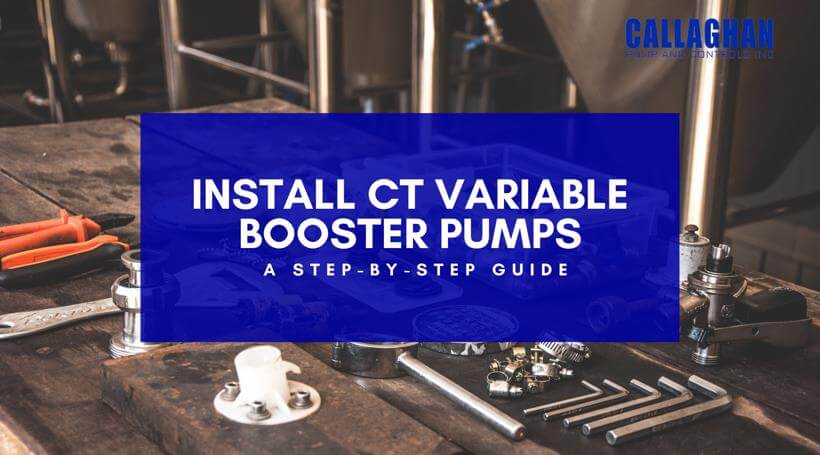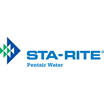
December 10th, 2021
No matter how beautiful and tall a building is, if it doesn’t have adequate water pressure to meet your daily needs, it won’t be worth living in. I mean, just take the case of high-rise buildings. They usually face water pumping challenges, including low water pressure and flow. Not everyone thinks about how water flows to the top floors of a high-rise building, but the answer is simple: CT Water Booster Pumps.
You see, water booster pumps are used to eliminate low water pressure problems in high-rise buildings. They are quite similar to a gas booster, but generally have a simpler mechanism. These devices are usually electrically-driven centrifugal pumps that have a non-return valve. They suck water into the inlet and then push it through the outlet of the booster pump.
When the pressure drops below the set-point or reaches the high set-point, the switch automatically turns on and off, helping the pump maintain water pressure. There are variable speed pumps that use pressure feedback to control motor speed and achieve a reasonably constant discharge. They are usually controlled by a pressure-sensing device, which is attached to the pump. With variable speed pumps, you can control and operate at multiple speeds. This is an important feature if you want to perform tasks that require flow adjustment of a pump.
Although several companies design water pressure booster pumps in Connecticut, the essential components are usually the same everywhere in the world. These components chiefly include:
A motor is required to run CT Water Booster Pumps. It could be powered by either electricity or diesel, depending on the type of project. As the pump needs electricity to work, the electrical installation of the motor should be carried out by a professional electrician.
Impellers are responsible for boosting the water pressure. They are a type of rotating component that have multiple fixed blades that rotate the water axially and radially with the help of centrifugal force. An Impeller’s role is to propel the water in the mainline and help it reach the destination through the inlets and outlets of the pump.
Pressure and flow sensors are used to sense the required pressure and adjust the value accordingly. They also protect the pipelines by not supplying unwanted pressure that your household doesn’t actually need.
To connect the water line to the pump inlet, you need to connect the other line to the pipelines. This will help you distribute water throughout the household. You can consider installing a water pressure tank, but it is not always necessary.
Water booster pumps make life easier by providing consistent water pressure. However, installing them can be daunting and time-consuming. That’s why it’s the right approach to hire an expert for hassle-free installation. To help you understand the installation process, we have mentioned a few important steps below.
Water booster pumps are essential when it comes to boosting water pressure and flow in high-rise buildings. From construction sites to warehouses, these devices are used in a wide variety of areas. However, it is crucial to understand how to wire a water booster pump. To give you insights, we have created a step-wise guide. Have a look:
Step 1: Choose a Place to Mount the Controller Box
The location of the controller box should be away from direct sunlight and moisture. Make sure it’s screwed to the wall surface and is as close as possible to the water source.
Step 2: Check the Local Codes for Wiring
You should check the local codes to ensure what type of cables are appropriate for wiring. Check to see whether the local code suggests any conduit. Plan the path of the wires in the best way possible and cover the wires in conduit as per the instructions.
Step 3: Wire the Switch as well as the Controller Box
Read the manual to determine the accurate wiring diagram. Now remove at least two inches of sheathing from the wiring cable and connect the black and white wires to the corresponding slots of the switch. Don’t forget to connect the ground wire to the ground screw. Repeat the procedure for connecting the switch to the controller box.
Step 4: Connect the Pump to the Power Supply
Make sure you turn the main switch off in order to avoid electrocution. Remove the sheathing from the cable, insert it through a knockout, and then clamp it tight. Double-check all the connections before turning on the power supply and the pump.
When the water pressure and flow rate delivered at individual plumbing fixtures fail to meet your code requirements, just install the water boosting system. Make sure no clogged or undersized piping is responsible for the low water pressure. However, determining the sizing, wiring, and plumbing needs of your water booster pump can be challenging. As the industry standards aren’t universally accepted, it’s better to seek a professional’s guidance.
At Callaghan Pump, we help our customers determine their pumping needs to ensure the best installation experience of water booster pumps. We have an experienced team of professionals to help you ensure whether your building needs one of the Connecticut water booster pumps.
Drop a message to inquire.
john@callaghanpump.com,
eileen@callaghanpump.com,
dan@callaghanpump.com,
sales@callaghanpump.com,
service@callaghanpump.com












